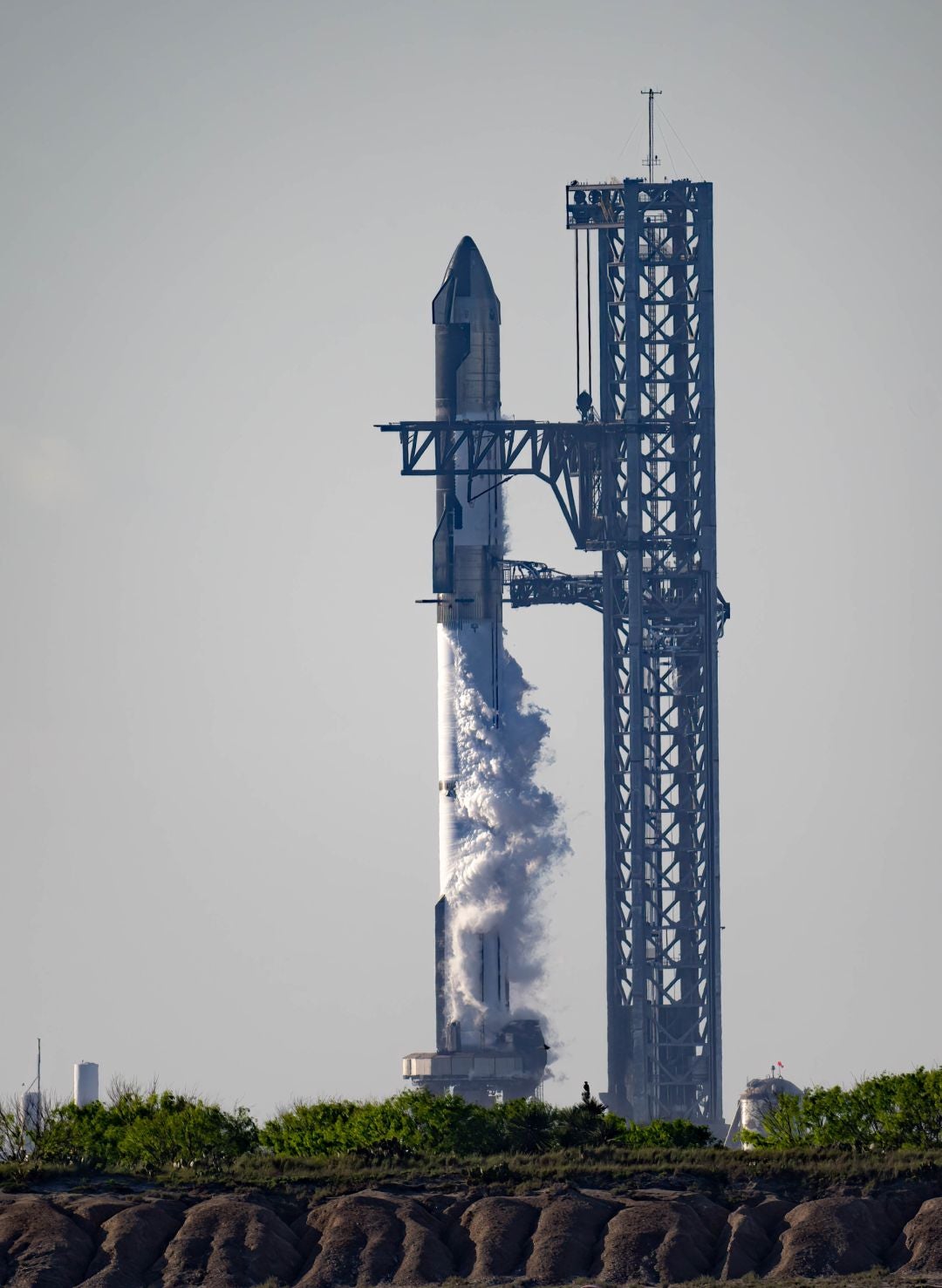On Monday, a pesky valve is all that came between SpaceX and the maiden flight of its Starship megarocket. The company is now targeting Thursday morning for a mission that CEO Elon Musk predicts has a 50/50 chance of succeeding.
SpaceX originally said it required 48 hours to “recycle” the rocket in preparation for the second launch attempt but later revised that figure to 72 hours. That 24-hour bump conveniently sets the stage for a potential launch on 4/20 — a cherished date in Musk’s calendar.

SpaceX will commence with its live broadcast of the second Starship launch attempt at 10:45 pm AEST on Thursday night. The 62-minute launch window opens at 11:30 pm AEST and closes at 12:30 am AEST, according to the company’s Starship launch page. We’ll set up a watch page tomorrow that will include SpaceX’s broadcast and a selection of third-party live streams.
The team called off Monday’s launch attempt with roughly nine minutes left in the countdown clock. Musk said a frozen valve caused pressurization issues in the Super Heavy booster, forcing the scrub. Aside from that, launch preparations appeared to go smoothly at SpaceX’s Starbase facility in Boca Chica, Texas. Hopefully SpaceX will have resolved the valve problem by Thursday and the weather in south Texas will continue to cooperate.
For the inaugural launch of Starship, the 120 metre-tall megarocket will attempt to complete a partial orbit of Earth, in a mission that’s expected to last for 90 minutes. The Super Heavy booster will fall into the Gulf of Mexico some eight minutes after taking flight, while the Starship upper stage will reach an orbital altitude and travel as far as Hawaii, ending with a violent splash down in the Pacific Ocean roughly 100 km northwest of Kauai.
It’s a critically important first test of the fully integrated rocket, which SpaceX will use to transport crews, spacecraft, satellites, and cargo to various locations in the solar system. NASA needs the rocket as well, as the upper stage is slated to serve as the Human Landing System for the Artemis 3 and Artemis 4 missions scheduled for later this decade. The two-stage megarocket, with a booster powered by 33 Raptor 2 engines, will exert an estimated 16.5 million pounds of thrust at liftoff and feature a payload compartment bigger than any fairing currently in operation, according to the company.
What are you expecting for the first flight of @SpaceX‘s #Starship megarocket?
— Gᴇᴏʀɢᴇ Dᴠᴏʀsᴋʏ (@dvorsky) April 17, 2023
In March, Musk said Starship has a 50 per cent chance of succeeding on its first mission. This is hardly new territory for SpaceX, a company that takes an iterative approach to product development. Success or failure, SpaceX will learn from this mission and apply the relevant findings in the never-ending effort to create more reliable and increasingly efficient launch vehicles.
